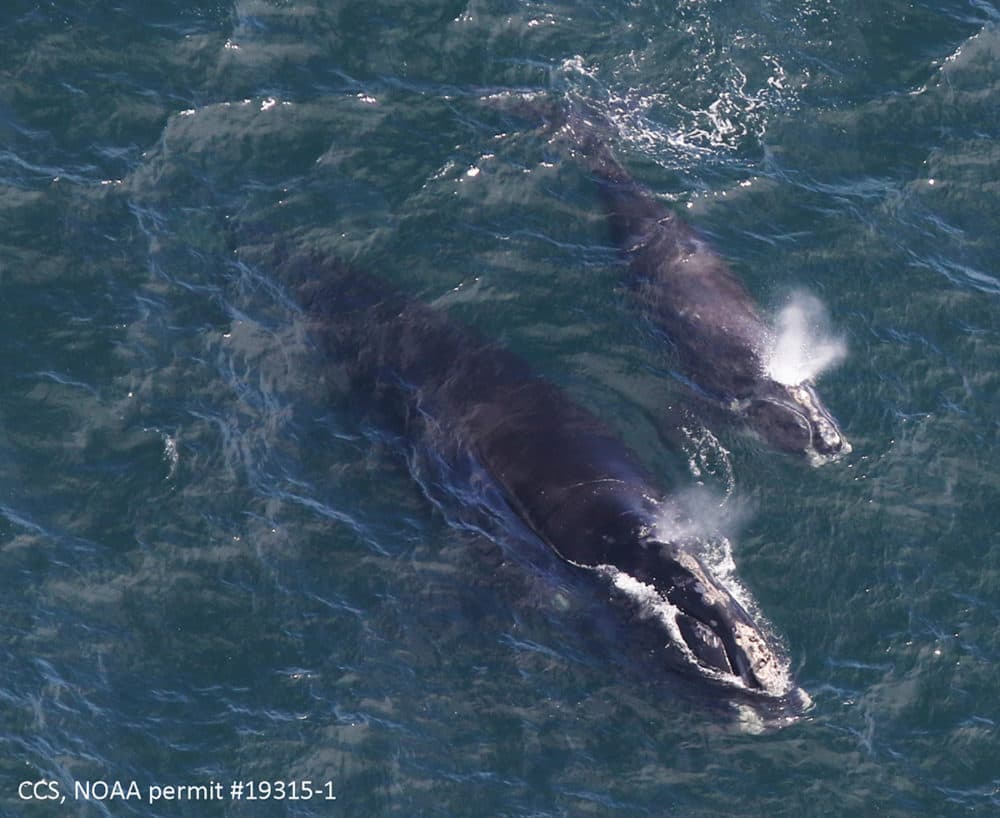Advertisement
Report Finds Ships Violating Speed Limits In New England, Increasing Risk To Right Whales

A new report finds most ships are ignoring voluntary New England speed zones intended to protect the critically endangered North Atlantic right whale.
The non-profit advocacy group Oceana analyzed self-reported vessel speeds between 2017 and 2020. Overall, of the 10 mandatory speed zones established along the East Coast, the zones in New England have the highest levels of compliance. However, in the New England zones with voluntary speed limits, noncompliance has climbed over the past four years.
"We have thousands of vessels that are going through these identified whale conservation zones," said Gib Brogan, senior campaign manager and policy analyst at Oceana. "These vessels are traveling at dangerous speeds and disregarding the regulations that are designed to conserve the whales."
The population of North Atlantic right whales now stands at about 360; the primary causes of death for the whales are rope entanglements and ship strikes.
The National Oceanic and Atmospheric Administration (NOAA) designates a dynamic management area (DMA) when whales are spotted nearby. This designation means that ships 65 feet long and up are asked — but not required — to stay below 10 knots.
According to the Oceana analysis, in 2017 only 48.5% of ship transits through the Southern New England voluntary zones were above that speed limit. However that percentage jumped the next year, with approximately 64% of ship transits moving above 10 knots. Noncompliance continued to climb over the following two years, with 72.5% of trips exceeding the speed limit in 2019, and 77% of trips in violation in 2020.
"It's not just the big freighters," said Brogan, "it's the smaller boats and the passenger boats that can be just as deadly for the right whales."
More from WBUR
In the same region, ships have higher levels of compliance in the seasonal management areas (SMAs), which are permanent, seasonal zones with mandatory speed limits in places where right whales are known to congregate every year. In New England, these zones are Cape Cod Bay, the Off Race Point zone, Great South Channel and Block Island Sound.
The Oceana report found in nearly each of the past four years, more than half of ship transits through those seasonal zones complied with the mandatory speed limit; the only exception was the Off Race Point zone, where 51% of transits were over 10 knots in November 2017 and July 2018.
The report echoes the findings of NOAA's own analysis released in 2020. The NOAA report found the seasonal zones saw a reduction in speed over time, even when those ones were not inactive; it also found "limited mariner cooperation" in the voluntary speed zones at percentages "that fell well short" of levels reached in the seasonal, mandatory zones.
NOAA established the speed zones beginning in 2008 to protect the North Atlantic right whales. The Oceana report recommends NOAA make all speed limits permanent and suggests increasing enforcement efforts.
In a statement, NOAA said reducing the risk of vessel strikes is a priority. The agency said following its speed assessment last year, it is evaluating options for further action.
